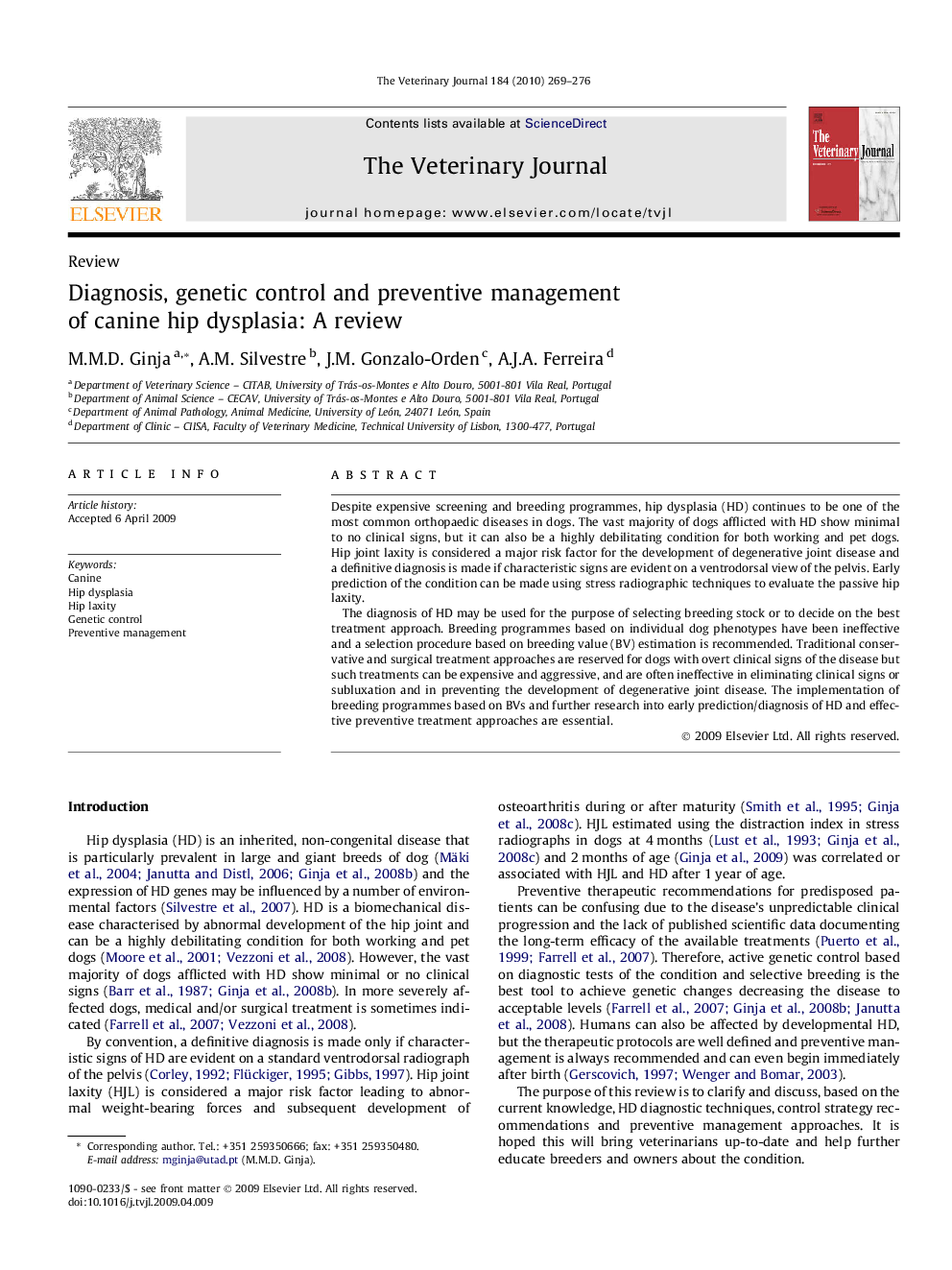| کد مقاله | کد نشریه | سال انتشار | مقاله انگلیسی | نسخه تمام متن |
|---|---|---|---|---|
| 2465252 | 1111823 | 2010 | 8 صفحه PDF | دانلود رایگان |

Despite expensive screening and breeding programmes, hip dysplasia (HD) continues to be one of the most common orthopaedic diseases in dogs. The vast majority of dogs afflicted with HD show minimal to no clinical signs, but it can also be a highly debilitating condition for both working and pet dogs. Hip joint laxity is considered a major risk factor for the development of degenerative joint disease and a definitive diagnosis is made if characteristic signs are evident on a ventrodorsal view of the pelvis. Early prediction of the condition can be made using stress radiographic techniques to evaluate the passive hip laxity.The diagnosis of HD may be used for the purpose of selecting breeding stock or to decide on the best treatment approach. Breeding programmes based on individual dog phenotypes have been ineffective and a selection procedure based on breeding value (BV) estimation is recommended. Traditional conservative and surgical treatment approaches are reserved for dogs with overt clinical signs of the disease but such treatments can be expensive and aggressive, and are often ineffective in eliminating clinical signs or subluxation and in preventing the development of degenerative joint disease. The implementation of breeding programmes based on BVs and further research into early prediction/diagnosis of HD and effective preventive treatment approaches are essential.
Journal: The Veterinary Journal - Volume 184, Issue 3, June 2010, Pages 269–276